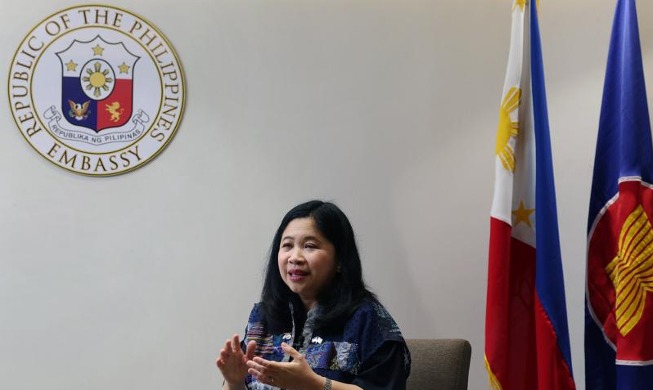
By Yang Sangkeun
Director of Korean Cultural Center in Germany
Multiple factors determine a country's cultural characteristics, but it's hard to discuss a culture without including its cuisine. Making a living has been the most crucial task for humans since ancient times. This can be seen in the passing on of one's food culture over generations even if members of a people move elsewhere. In that sense, the extent of the dissemination of a nation's culinary culture is said to be an important criterion of that country's cultural influence.
I remember the shock I felt when visiting a Korean restaurant in Berlin after assuming my post as director of the Korean Cultural Center (KCC) in Germany. The very small and simple place made it hard to tell from the outside whether it was a Korean restaurant. All the tables were full and occupied by customers in the area. More surprising was that this scene was common at the some 100 Korean restaurants in Berlin. When I was studying in Berlin about 15 years ago, the city had fewer than 10 Korean restaurants. Considering that the customers used to be overwhelmingly Korean, the situation today constitutes a drastic change.
So how has Hansik (traditional Korean food) captivated the palates of Germans in such a short time? This cannot be explained without mentioning the growth process of Hallyu (Korean Wave) in Germany.
Hallyu got off to a slow start in Germany than in countries where the Korean Wave flourished like those in Asia, and the passion for Hallyu in the Western European country was relatively low. The main reason is perhaps that Germany is not a country that sees rapid change or goes crazy over something easily. On the other hand, Hallyu's growth can be explained by the global transition from traditional to new media as the main medium of influence.
Hallyu began to grow in many countries from the late 1990s to early 2000s thanks to hit K-dramas such as "Jewel in the Palace" and "Winter Sonata." Germany, however, rarely aired Asian dramas on public TV, thus the foundation for the spread of Hallyu there was formed relatively late.
Yet as new media's influence grew especially thanks to over-the-top platforms, viewership of K-dramas grew into a daily routine. This environmental change has raised the frequency of the German public's contact with Korean culture and naturally led to the stage of consumption of Korean cultural content shown in such dramas.
For example, the image of Hansik as a healthy and dietary cuisine has fueled a boom in the food, and cooking Hansik at home has recently spread as a trend. Given the wider availability of Hansik ingredients at neighborhood supermarkets in Germany, Hansik is now accepted as a major cuisine there and gaining ground.
In watching the unprecedented golden age of Hallyu, I initially felt proud and pleased. On the other hand, I also honestly worry over how long this happiness can last.
A recent news report said about 100 Korean restaurants are thriving in Berlin, but many of them are run by non-Koreans such as Chinese and Vietnamese. These establishments have Korean-style signs but also face problems like using unfamiliar spices and ingredients to make kimchi and bibimbap, or rice mixed with meat, vegetables and spicy red pepper paste, and using inaccurate word order in food names like "mandu (dumpling) kimchi" instead of "kimchi mandu."
Of course, the presence of people from other countries in the Korean restaurant scene attests to Hansik's popularity. But this also implies the hard-earned prestige earned by Korean cuisine could face the risk of collapsing overnight.
KCCs worldwide have thus focused on boosting awareness of Korean culture and expanding its demand base, but now need to do more to protect and preserve the asset value of Hallyu carefully cultivated so far.
For example, the KCC's main promotional slogan at Berlin Food Week in October last year was "proper promotion of Hansik." This event offered the chance to show the thousands of visitors who mistook gimbap (seaweed rice rolls) for Japanese sushi to learn the Korean food's true value.
As this shows, many Germans love Korean culture but often are unaware that what they love is Korean. Our KCC pledges more efforts toward promoting the true value of Korean culture.
Our KCC will expand our invitational programs so that through our main assets like performances, exhibitions and lectures, visitors can watch, listen and experience Korea in three-dimensional and comprehensive ways. We will also help future generations in Germany access and properly appreciate Korean culture at an early age.
Our invitational programs have a high satisfaction rate among participants, thus they are deemed effective in instilling a positive image of Korea in Germans from a young age. The KCC every year invites 30-40 elementary school students to provide comprehensive explanations of traditional and contemporary Korean culture. These small steps can develop the future of Hallyu in Germany from the ground up.
This year marks the 30th anniversary of the KCC's opening on German soil. Korean culture has clearly blossomed like this today thanks to the efforts and dedication of many people despite adversity. Now is the time for more efforts to go into management so that Hallyu trees as cultivated by our predecessors can continue to bear fruit for a long time.
Translated by Korea.net staff writer Lee Jihae
